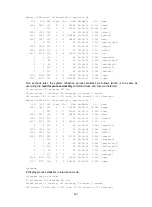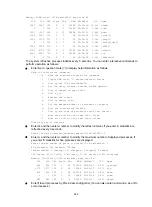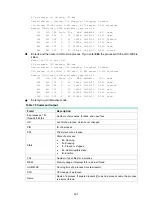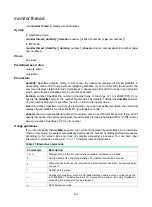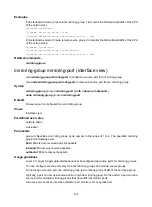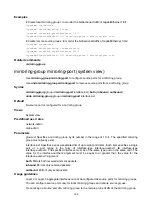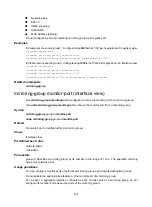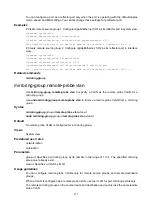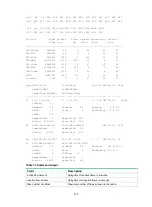
305
Examples
# (In standalone mode.) Create local mirroring group 1 to monitor the bidirectional traffic of the CPU
of the card in slot 1.
<Sysname> system-view
[Sysname] mirroring-group 1 local
[Sysname] mirroring-group 1 mirroring-cpu slot 1 both
# (In standalone mode.) Create remote source group 2 to monitor the bidirectional traffic of the CPU
of the card in slot 2.
<Sysname> system-view
[Sysname] mirroring-group 2 remote-source
[Sysname] mirroring-group 2 mirroring-cpu slot 2 both
Related commands
mirroring-group
mirroring-group mirroring-port (interface view)
Use
mirroring-group mirroring-port
to configure a source port for a mirroring group.
Use
undo mirroring-group mirroring-port
to remove a source port from a mirroring group.
Syntax
mirroring-group
group-id
mirroring-port
{
both
|
inbound
|
outbound
}
undo mirroring-group
group-id
mirroring-port
Default
No source port is configured for a mirroring group.
Views
Interface view
Predefined user roles
network-admin
mdc-admin
Parameters
group-id
: Specifies a mirroring group by its number in the range of 1 to 4. The specified mirroring
group must already exist.
both
: Mirrors both received and sent packets.
inbound
: Mirrors only received packets.
outbound
: Mirrors only sent packets.
Usage guidelines
Layer 2 or Layer 3 aggregate interfaces cannot be configured as source ports for mirroring groups.
You can configure source ports only for local mirroring groups and remote source groups.
Do not assign a source port of a mirroring group to the remote probe VLAN of the mirroring group.
Typically, a port can act as a source port for only one mirroring group. On the switch, a port can be a
source port for multiple mirroring groups that have different monitor ports.
A source port cannot be used as a reflector port, monitor port, or egress port.

